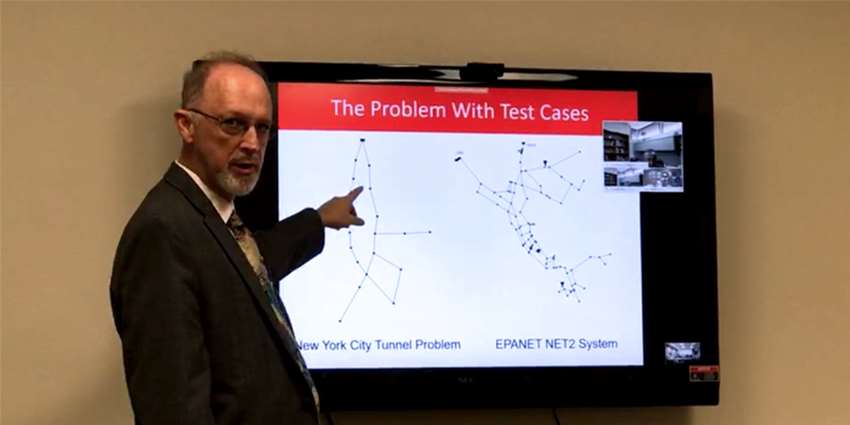Kentucky Water Resources Research Institute Director and modeler Dr. Lindell Ormsbee cautioned researchers to strive to develop useful but not too complex models at a recent seminar at the Texas Water Resources Institute in College Station.
“We can make models to be so complex but not useful,” Ormsbee said. “All models are approximations. Our objective of modeling is to develop a useful model: a tool that helps obtain a better solution to an actual problem.”
Ormsbee presented his seminar, “Reflections on 40 Years of Mathematical Modeling of Water Resource Systems: What Makes a Useful Model?” as part of his Texas A&M University campus visit in February.
He examined the applied, theoretical and academic motivations for mathematical models for water resource systems along with specific examples from each category.
He presented general questions for use in evaluating model usefulness expressed as a balance between model accuracy and model complexity, along with some general rules for model development and application in each category.
In addition to questioning the usefulness of the model, Ormsbee said researchers should question whether they have fallen into the trap of believing the approximated model is reality.
Citing a model used in a Kentucky watershed, he said the model had incorrect data and consequently lost all validity with the stakeholders in the area. He cautioned that researchers should make sure the model is consistent with the scientific theory applicable to the problem and understand the limitations or assumptions of the model.
Ormsbee said when working with models researchers should ask: Have I identified the real problem? He cited another case study where the modelers were looking at incorrect data. That project was “a cautionary tale about always double-checking your data, making sure of what you are modeling and making sure you understand the problem,” he said.
He said researchers should also ask the question: Does my model lead to a change in the original problem definition? “Sometimes models can be used to define or identify the problem as opposed to solving them,” he said. “Make sure you verify the problem to be solved before embarking on building a model.”
He said researchers should always start with the problem and then select the model, not the other way around.
Additional questions that Ormsbee said are essential when working with models include: Do the errors or uncertainty in my model exceed the relative improvement obtained by optimization? Have I verified my model against a robust data set? Is my model too complex? Am I comparing my model’s performance against the simplest available useful model?
Ormsbee is the Raymond-Blythe Professor of Civil Engineering at the University of Kentucky. He also currently serves as the executive director of the Tracy Farmer Institute for Sustainability and the Environment and the associate director of the University of Kentucky Superfund Research Center.
As director of the Kentucky Water Resources Research Institute, he has been involved in a water infrastructure program, providing technical support and modeling for small water utilities; a watershed management program, helping develop total maximum daily loads and watershed management plans; and a water sustainability program.


